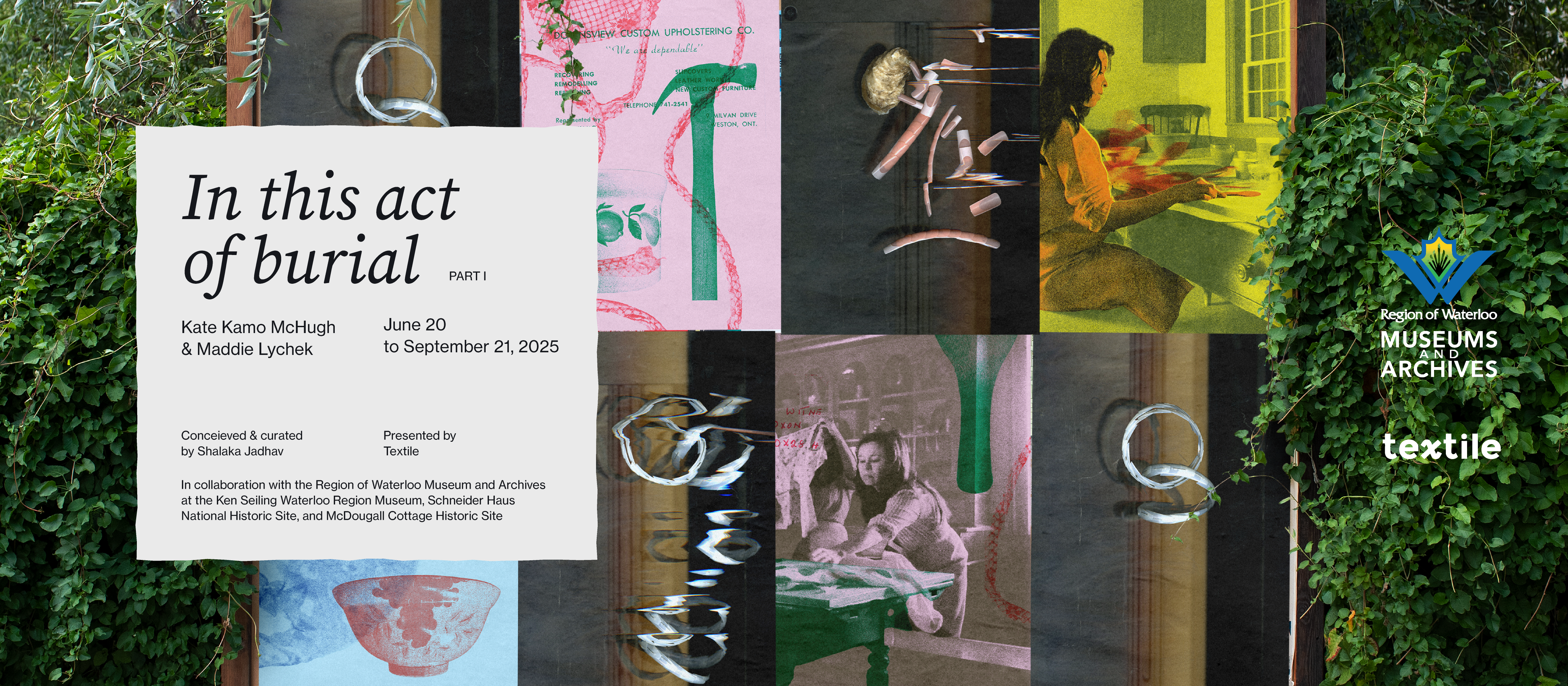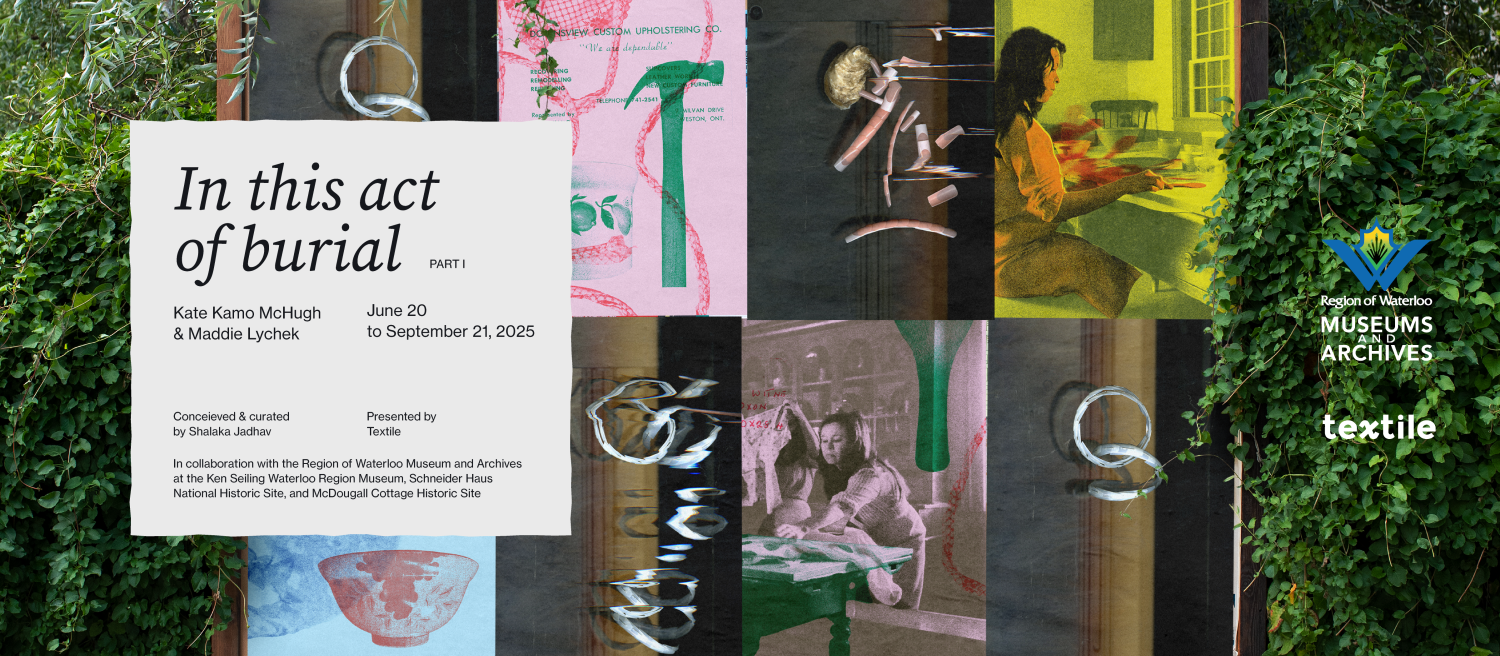Kate Kamo McHugh & Maddie Lychek (Summer 2025)
Meghan Harder (Fall 2025 - Spring 2026)
Conceived and curated by Shalaka Jadhav
Presented by Textile in collaboration with the Region of Waterloo Museums and Archives at Ken Seiling Waterloo Region Museum, Schneider Haus National Historic Site and McDougall Cottage Historic Site.
Wheatpasting, often associated with mass marketing tactics, remains a quick-fast-dirty technique to disseminate messages widely in a low-impact manner. It also engages with ideas of residue, an aspect that will be further elaborated upon during the residency. This practice allows artists to explore how their residue, both material and metaphorical, builds on itself or interacts in conversation with one another. Extending this line of inquiry, In this act of burial prompts the questions:
Why does this residue matter in the realm of public memory work?
What potential does it hold for challenging or transforming collective narratives within our community?
“In this act of burial” is a phrase that comes from scholar Achille Mbembe's work on archives, highlighting how archives affix certain narratives while dampening others, privileging institutional control over historical memory. In resisting place-based narratives in service of growth and prosperity, In this act of burial considers the gaps in traditional archival practices, bringing forward voices and stories that have been overlooked.
Movement-based artist Kate Kamo McHugh (Spring - Fall 2025) will be exploring the region’s connection to Japanese-Canadians, and broadly, Asian representation in the archives. Kamo McHugh is also interested in what is passed on to, what is lost and what remains.
In her preliminary research, artist Maddie Lychek (Spring - Fall 2025) noticed significant gaps in the Region’s digital archive, noting a lack of images populated from the keywords “gay”, “lesbian”, “dyke”, “Filipino”. Lychek will be considering what it means to queer the archive through an intervention of finding herself in the archive, recontextualizing existing objects in the permanent collection.
In fall 2025, artist Meghan Harder will install a polyptych of images in the lightboxes at Schneider Haus National Historic Site. Harder’s artifact-responsive drawing practice builds on her ongoing research of fraktur folk art, historically produced by early Mennonite settlers. In tracing, piling up, and recomposing, Harder searches for ways to defamiliarize fraktur's forms and meaning.


